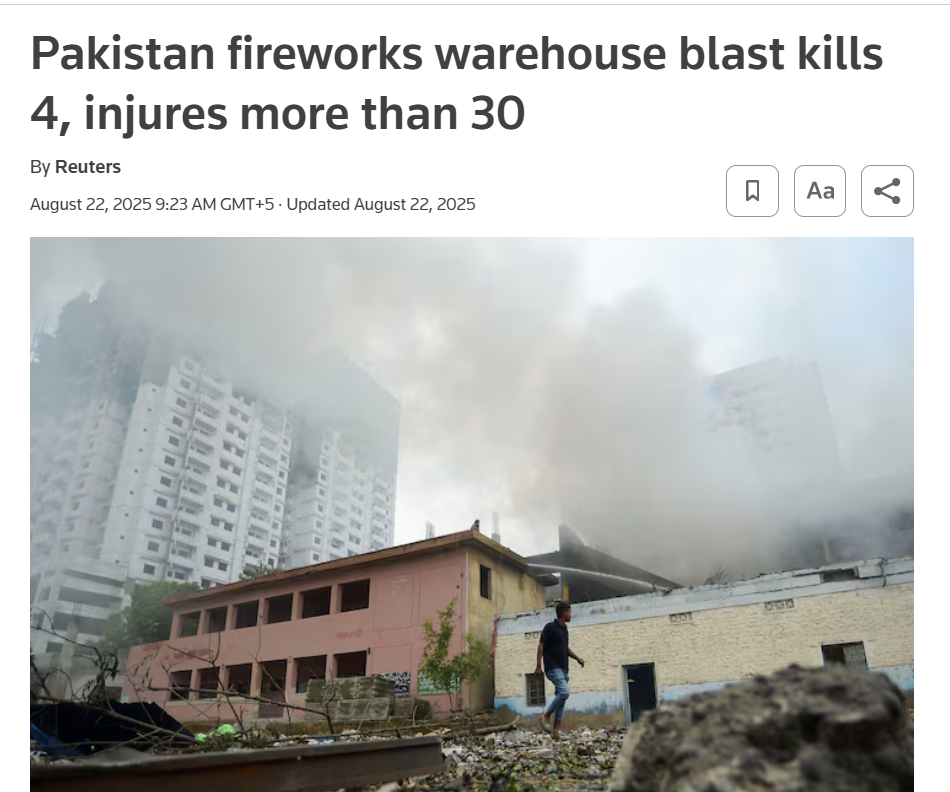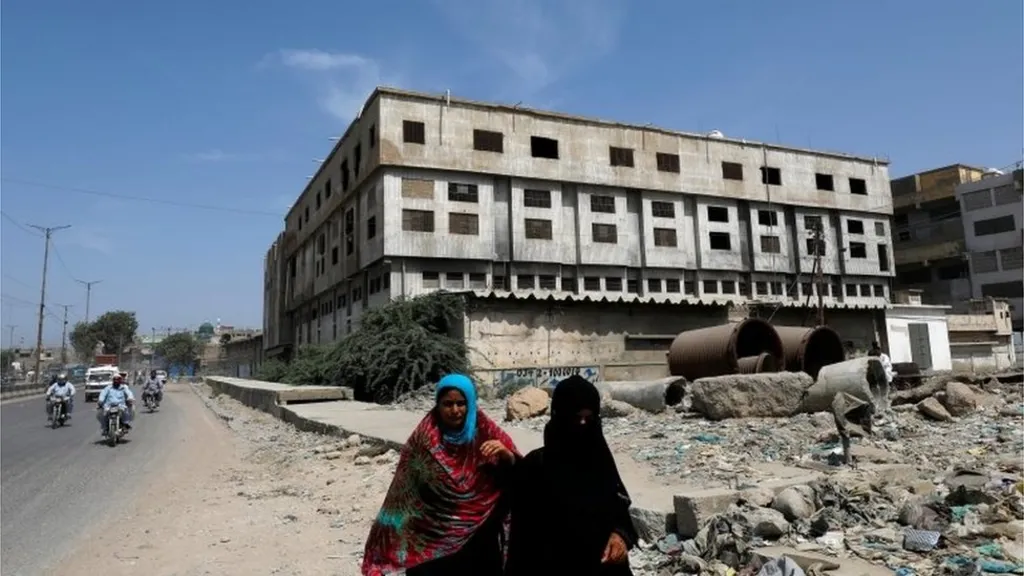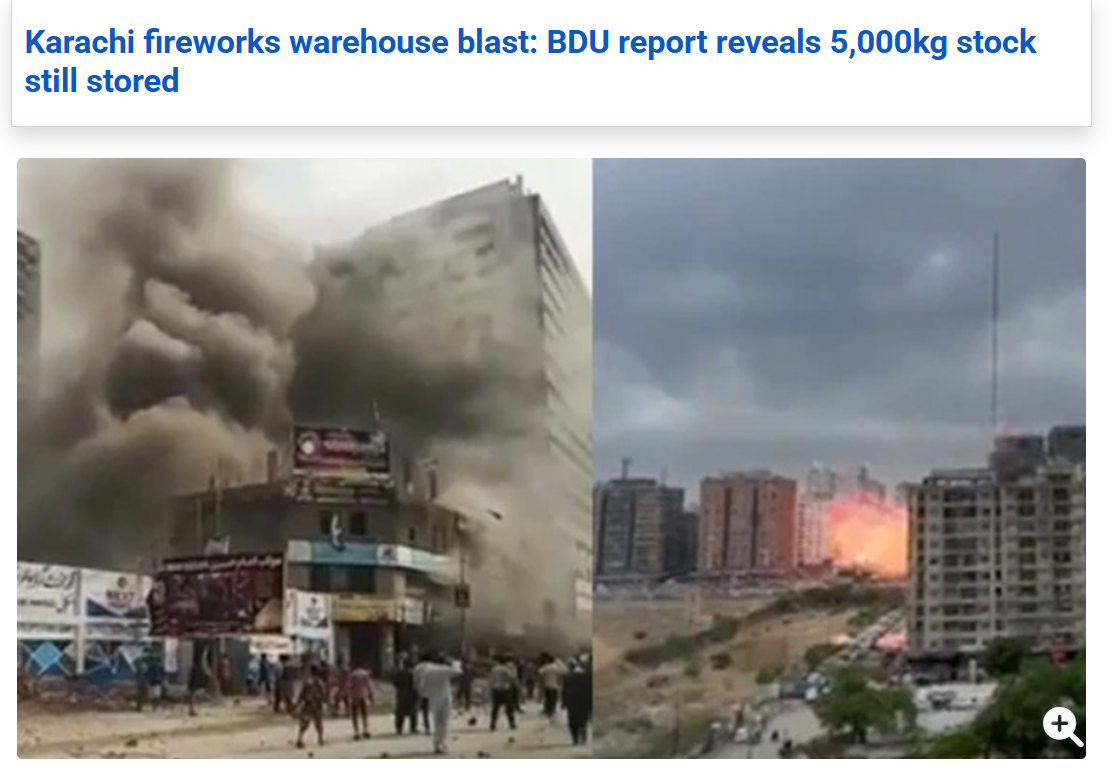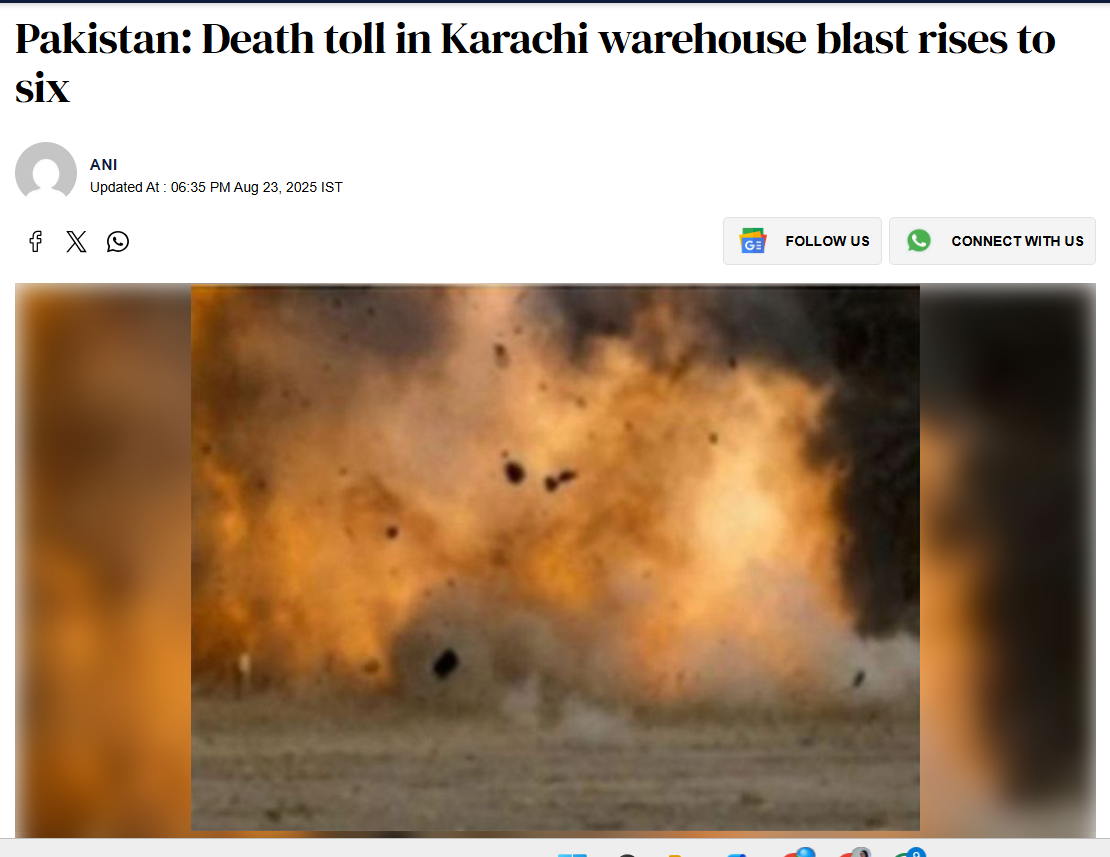On August 21, 2025, Karachi’s densely populated Saddar area faced a tragic explosion at a fireworks warehouse on MA Jinnah Road. The blast caused a powerful fire, shattered windows, and emptied the streets as people fled in panic. At least five people lost their lives, and more than 30 others were injured, some critically. Firefighters battled thick smoke, and many victims were rushed to nearby hospitals. Authorities suspect a short circuit triggered the disaster, but investigations are still underway.

Image Credit: Reuters
Longstanding Neglect of Safety Rules
This tragedy was not unexpected. Previous industrial accidents in Pakistan have highlighted a pattern of poor safety practices and weak enforcement of rules. Even in the 2009 Gharibabad firecracker blast, a family lived above the factory. Neighbors reported the danger before the blast, but authorities took no action.
During a factory fire in Baldia Town in 2012, locked exits and barred windows prevented escape, and hundreds lost their lives. Such avoidable tragedies occur because safety laws exist mostly on paper.

Image Credit: BBC
What Went Wrong This Time?
In the recent Karachi blast, the warehouse reportedly stored over 5,000 kilograms of fireworks, far above the legally allowed limit of 50 kg per shop. Licensing and enforcement failed Officials also pointed out that the warehouse was illegal and located in a crowded area, both red flags that were ignored.

Image Credit: Duyna News
Immediate Government Action
The state responded quickly. Police registered a case for manslaughter and negligence. The warehouse owner and his associate were named in the FIR, and rescue teams and Rangers took charge of the site .
Sindh’s Chief Minister Murad Ali Shah ordered full medical support for victims and a detailed incident report.

Image Credit: The Tribune
Authorities also called for the remaining explosive material, still stored in three warehouses, to be removed immediately. Further risky stockpiles were found nearby and labeled a serious public safety threat .
How Can We Prevent Future Blasts?
To protect lives and property, action must be both urgent and sustained. Here’s how:
Enforce the Rules
Licenses for fireworks storage should be strictly limited to safe zones—far from neighborhoods and petrol stations. Officials must conduct regular inspections and impose fines or closures if safety standards are not met.
You May Like To Read: DIL DIL PAKISTAN: WHEN PATRIOTISM MOVES BEYOND ANTHEMS AND FLAGS
Use Modern Safety Measures
Factories and warehouses must adopt international norms like OHSAS 18001. This includes using fire-resistant walls, emergency exits, sprinkler systems, and clear signage, even installations that glow in the dark during blackouts.
Train Staff Properly
Factory owners need to hire trained safety officers and conduct regular fire drills. Fire extinguishers must be properly maintai,ned and everyone should know how to use them.
Build Community Awareness
Local residents need to understand the risks of living near hazardous warehouses. Neighborhood associations and schools can help spread awareness and early warning systems.
Empower Inspectors
Police, fire departments, and regulatory agencies need more budget and training. Latest technology, like drone surveillance, can help spot illegal storage before disaster strikes. Karachi’s fire services must also receive more modern equipment to handle complex industrial blazes .
A Shared Responsibility
Safety cannot rest on one group alone. It is a shared duty between the state, industries, and citizens. The government must lead with smart policies, strict enforcement, and emergency planning. This means updating old safety codes, inspecting factories often, and punishing those who break the rules. Laws on paper are not enough. They must be applied in full to prevent future loss of life.
Factories and city planners also carry a major part of this duty. Industrial units that deal with fireworks, chemicals, or fuel should never be allowed inside crowded areas. Zoning rules exist for a reason—to keep dangerous materials far from homes, schools, and markets. If owners ignore these rules to save money, or if inspectors turn a blind eye, it creates the risk of another disaster. Business growth must never come at the cost of public safety.
Citizens, too, cannot step aside. A community that speaks up can stop accidents before they happen. Neighbors often notice illegal warehouses or unsafe storage long before inspectors arrive. Reporting these dangers to local officials, police, or the media can save many lives. Schools and community groups can also run awareness drives to teach people how to respond in case of fire or explosions.
Together, these steps create a culture of prevention. Tragedy is not destiny. It comes when warnings are ignored and rules are broken. But when safety becomes a community habit, risks shrink. This means that families in Karachi and across Pakistan can live, work, and celebrate without fear.
A safer future depends on unity. When government, industries, and people act together, accidents like the recent fireworks blast can become rare exceptions instead of recurring news.
Stronger Unity, Safer Cities
The fireworks explosion in Karachi exposed weaknesses—but it can also become a turning point. This tragedy can teach us how to protect lives before danger strikes again.
The government’s prompt action shows it takes public safety seriously. Now, it is time to build on that moment, strengthening regulations, training safety officers, educating communities, and investing in preparedness.
When each side plays its part, Public parks will be the place for fireworks—not warehouses. A safer Karachi can shine brighter than any firecracker.
You May Like To Read: The Hues of Liberty: The Influence of Green and White on Pakistani Art and Design







